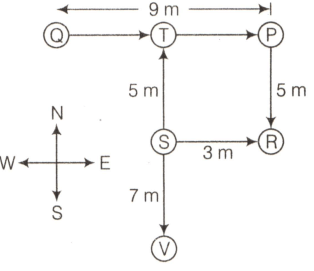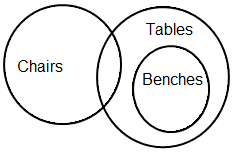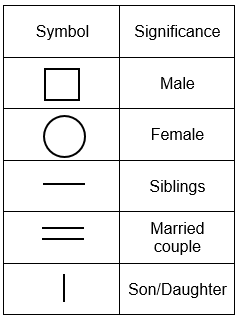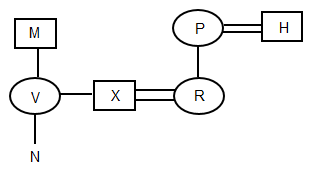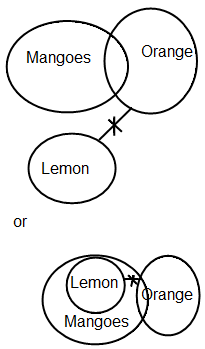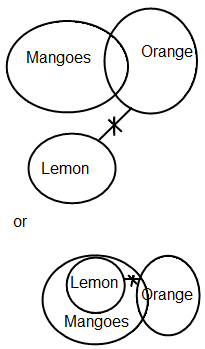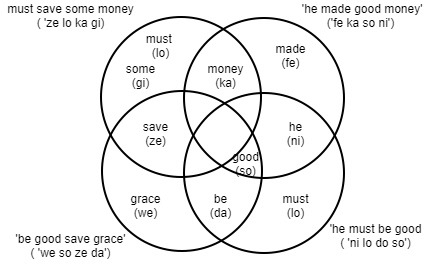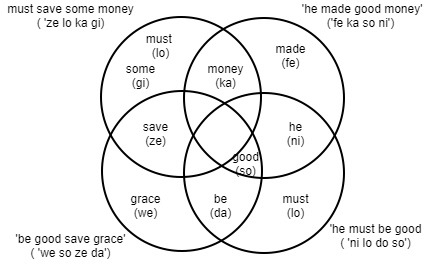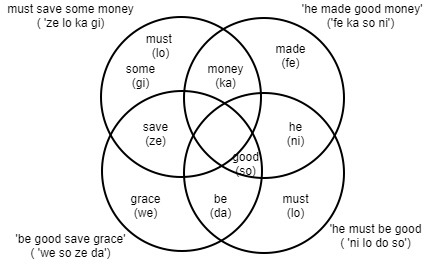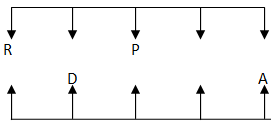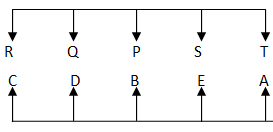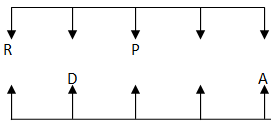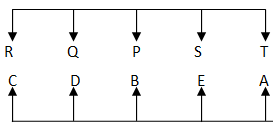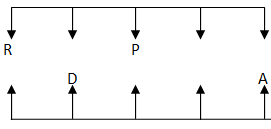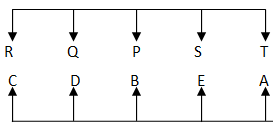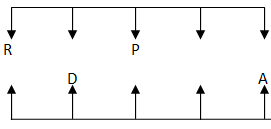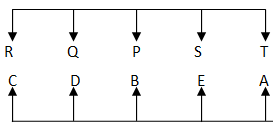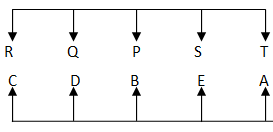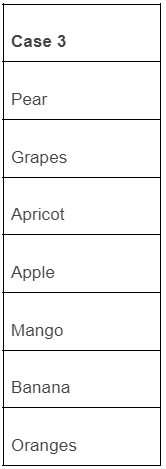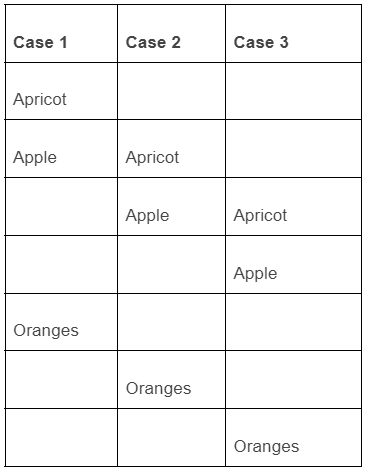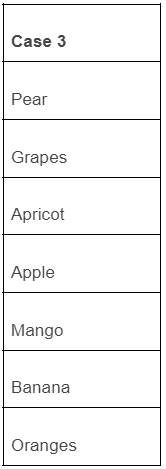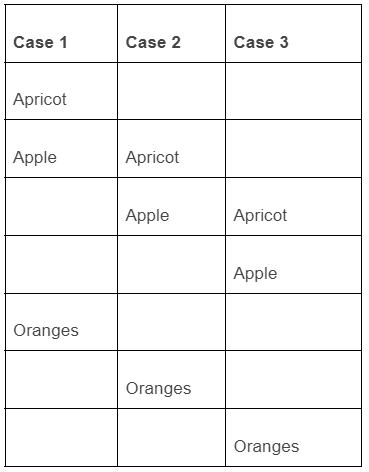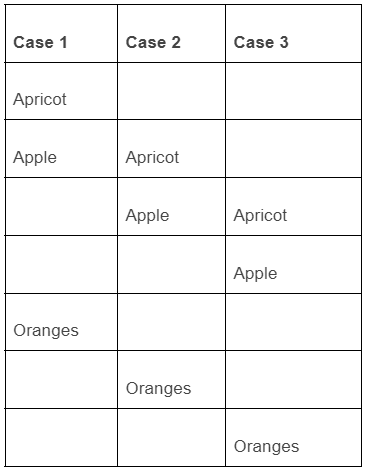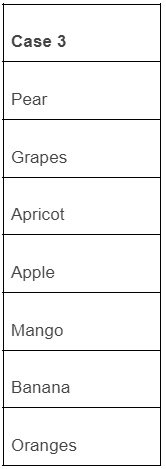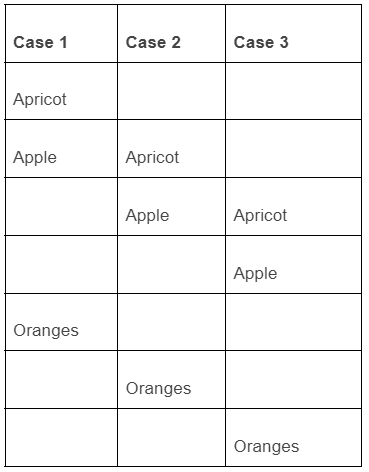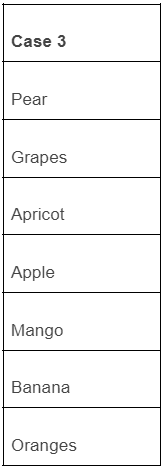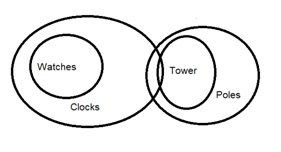IBPS RRB Clerk Prelims Mock Test - 10 - Bank Exams MCQ
30 Questions MCQ Test - IBPS RRB Clerk Prelims Mock Test - 10
Study the following information to answer the given question.
Point P is 9 m towards the East of point Q. Point R is 5 m towards the South of point P. Point S is 3 m towards the West of point R. Point T is 5 m towards the North of point S. Point V is 7 m towards the South of point S.If a person walks in a straight line for 8 m towards West from point R, which of the following points would he cross the first?
Directions: In the question below are given two statements followed by two conclusions. You have to take the given statements to be true even if they seem to be at variance with commonly known facts. Read both the conclusions and then decide which of them logically follow(s) from the given statements disregarding commonly known facts.
Statements:
Only a few chairs are tables.
All benches are tables.
Conclusions:
I. At least some benches are chairs.
II. All chairs can never be benches.
M is the father of V. V is the sister of X. X is married to R. R is the daughter of P. P is the wife of H.
If N is the only child of V, then how is N related to M?
Directions: In the question below are given two statements followed by two conclusions. You have to take the given statements to be true even if they seem to be at variance with commonly known facts. Read both the conclusions and then decide which of them logically follow(s) from the given statements disregarding commonly known facts.
Statements:
Only a few mangoes are oranges.
No orange is lemon.
Conclusions:
I. Some lemons are definitely not mangoes.
II. All mangoes can never be lemons.
Study the following information to answer the given questions:
In a certain code, 'ze lo ka gi' is a code for 'must save some money', 'fe ka so ni' is a code for 'he made good money', 'ni lo do so' is a code for 'he must be good and 'we so ze da' is a code for 'be good save grace'.
Q. Which of the following is the code of 'good'?
Study the following information to answer the given questions:
In a certain code, 'ze lo ka gi' is a code for 'must save some money', 'fe ka so ni' is a code for 'he made good money', 'ni lo do so' is a code for 'he must be good and 'we so ze da' is a code for 'be good save grace'.
Q. What does the code 'ze' stands for?
Study the following information to answer the given questions:
In a certain code, 'ze lo ka gi' is a code for 'must save some money', 'fe ka so ni' is a code for 'he made good money', 'ni lo do so' is a code for 'he must be good and 'we so ze da' is a code for 'be good save grace'.
Q. 'Grace of money' may be coded as:
Directions: In the following question, relationship between different elements is shown in the statement. The statement is followed by conclusions. Study the conclusions based on the given statement and select the appropriate answer.
Statements:
J < Q = L = R B = Z > O < T C
Conclusions:
I. R C
II. Q B
Directions: In the following question, a relationship between different elements is shown in the statement. The statement is followed by two conclusions numbered I and II. Study the conclusions based on the given statement and select the appropriate answer.
Statement:
A = B ≥ C = K ≤ s
Conclusions:
I. A = K
II. K ≤ A
Directions: In the following question, a relationship between different elements is shown in the statement. The statement is followed by two conclusions numbered I and II. Study the conclusions based on the given statement and select the appropriate answer.
Statement:
D ≥ T < M = N ≤ P < K
Conclusions:
I. T = P
II. P ≥ M
Directions: Each question is followed by two statements, A and B. Answer each question using the following instructions.
In a particular school, sixty students were athletes. Ten among them were also among the top academic performers. How many top academic performers were in the school?
A. Sixty per cent of the top academic performer were not athletes.
B. All the top academic performers were not necessarily athletes.
Give answer:
In a certain code language, 'pit nae tom' means 'apple is green', 'nae ho tap' means 'green and white' and 'ho tom ka' means 'shirt is white'. Which of the following code word is used for the word 'apple' in this code language?
Study the following information to answer the given questions.
Ten people are sitting in two parallel rows containing five people each, in such a way that there is an equal distance between adjacent persons. In row-1, P, Q, R, S, and T are seated and all of them are facing South. In row-2, A, B, C, D, and E are seated and all of them are facing North. Therefore, in the given sitting arrangement each member seated in a row faces another member of the other row. D sits third to the left of A. P faces immediate neighbour of D. R sits second to the right of P. Only one person sits between Q and S. B and E are immediate neighbours of each other. E does not face P and Q.
Q. How many persons are seated between Q and T?
Study the following information to answer the given questions.
Ten people are sitting in two parallel rows containing five people each, in such a way that there is an equal distance between adjacent persons. In row-1, P, Q, R, S, and T are seated and all of them are facing South. In row-2, A, B, C, D, and E are seated and all of them are facing North. Therefore, in the given sitting arrangement each member seated in a row faces another member of the other row. D sits third to the left of A. P faces immediate neighbour of D. R sits second to the right of P. Only one person sits between Q and S. B and E are immediate neighbours of each other. E does not face P and Q.
Q. Four of the following five are alike in a certain way and thus form a group. Which is the one that does not belong to that group?
Study the following information to answer the given questions.
Ten people are sitting in two parallel rows containing five people each, in such a way that there is an equal distance between adjacent persons. In row-1, P, Q, R, S, and T are seated and all of them are facing South. In row-2, A, B, C, D, and E are seated and all of them are facing North. Therefore, in the given sitting arrangement each member seated in a row faces another member of the other row. D sits third to the left of A. P faces immediate neighbour of D. R sits second to the right of P. Only one person sits between Q and S. B and E are immediate neighbours of each other. E does not face P and Q.
Q. Which of the following is true regarding B?
Study the following information to answer the given questions.
Ten people are sitting in two parallel rows containing five people each, in such a way that there is an equal distance between adjacent persons. In row-1, P, Q, R, S, and T are seated and all of them are facing South. In row-2, A, B, C, D, and E are seated and all of them are facing North. Therefore, in the given sitting arrangement each member seated in a row faces another member of the other row. D sits third to the left of A. P faces immediate neighbour of D. R sits second to the right of P. Only one person sits between Q and S. B and E are immediate neighbours of each other. E does not face P and Q.
Q. Who amongst the following represent the people sitting exactly in the middle of the rows?
Study the following information to answer the given questions.
Ten people are sitting in two parallel rows containing five people each, in such a way that there is an equal distance between adjacent persons. In row-1, P, Q, R, S, and T are seated and all of them are facing South. In row-2, A, B, C, D, and E are seated and all of them are facing North. Therefore, in the given sitting arrangement each member seated in a row faces another member of the other row. D sits third to the left of A. P faces immediate neighbour of D. R sits second to the right of P. Only one person sits between Q and S. B and E are immediate neighbours of each other. E does not face P and Q.
Q. Four of the following five are alike in a certain way and thus form a group. Which is the one that does not belong to that group?
Directions: Study the following information carefully and answer the question that follows.
Ravi is a fruit vendor. He packed 7 different fruits - Apples, Oranges, Mangoes, Grapes, Bananas, Pears and Apricots, in 7 different crates and kept the crates above each other but not in the same order. The crate with Bananas in it was not kept above the crate with Apples. Crates having fruits whose names start with the same letter but have different number of letters as per the English alphabet were kept together wherein the crate with fruit which has more letters in its name was kept immediately above the other. There were 2 crates between the crates of Apples and Oranges. There were 3 crates between the crates of Mangoes and Pears. The crate with Pears in it was kept on the top of the Grapes crate and it was the topmost crate among all the crates.
Q. If the positions of the crates of Apricots and Oranges were interchanged, then which fruit crate would be exactly 2nd to the bottom of the Oranges crate?
Directions: Study the following information carefully and answer the question that follows.
Ravi is a fruit vendor. He packed 7 different fruits - Apples, Oranges, Mangoes, Grapes, Bananas, Pears and Apricots, in 7 different crates and kept the crates above each other but not in the same order. The crate with Bananas in it was not kept above the crate with Apples. Crates having fruits whose names start with the same letter but have different number of letters as per the English alphabet were kept together wherein the crate with fruit which has more letters in its name was kept immediately above the other. There were 2 crates between the crates of Apples and Oranges. There were 3 crates between the crates of Mangoes and Pears. The crate with Pears in it was kept on the top of the Grapes crate and it was the topmost crate among all the crates.
Q. Which of the following fruit crates was kept exactly between the Mangoes and Oranges crates?
Directions: Study the following information carefully and answer the question that follows.
Ravi is a fruit vendor. He packed 7 different fruits - Apples, Oranges, Mangoes, Grapes, Bananas, Pears and Apricots, in 7 different crates and kept the crates above each other but not in the same order. The crate with Bananas in it was not kept above the crate with Apples. Crates having fruits whose names start with the same letter but have different number of letters as per the English alphabet were kept together wherein the crate with fruit which has more letters in its name was kept immediately above the other. There were 2 crates between the crates of Apples and Oranges. There were 3 crates between the crates of Mangoes and Pears. The crate with Pears in it was kept on the top of the Grapes crate and it was the topmost crate among all the crates.
Q. Which of the following crates was kept immediately above the crate of Apricots?
Directions: Study the following information carefully and answer the question that follows.
Ravi is a fruit vendor. He packed 7 different fruits - Apples, Oranges, Mangoes, Grapes, Bananas, Pears and Apricots, in 7 different crates and kept the crates above each other but not in the same order. The crate with Bananas in it was not kept above the crate with Apples. Crates having fruits whose names start with the same letter but have different number of letters as per the English alphabet were kept together wherein the crate with fruit which has more letters in its name was kept immediately above the other. There were 2 crates between the crates of Apples and Oranges. There were 3 crates between the crates of Mangoes and Pears. The crate with Pears in it was kept on the top of the Grapes crate and it was the topmost crate among all the crates.
Q. How many crates were kept below the crate of Apples?
Directions: Study the following information carefully and answer the question that follows.
Ravi is a fruit vendor. He packed 7 different fruits - Apples, Oranges, Mangoes, Grapes, Bananas, Pears and Apricots, in 7 different crates and kept the crates above each other but not in the same order. The crate with Bananas in it was not kept above the crate with Apples. Crates having fruits whose names start with the same letter but have different number of letters as per the English alphabet were kept together wherein the crate with fruit which has more letters in its name was kept immediately above the other. There were 2 crates between the crates of Apples and Oranges. There were 3 crates between the crates of Mangoes and Pears. The crate with Pears in it was kept on the top of the Grapes crate and it was the topmost crate among all the crates.
Q. Which fruit crate was kept at the bottommost position?
In these questions, the relationship between different elements is shown in the statements. The statements are followed by two conclusions. Study the conclusions based on the given statements and select the appropriate answer.
Statements:
F < W =J ≥ K; W ≤ D
Conclusions:
I. D > K.
II. K = D.
If all the letters in the word "PENCIL" are arranged in order from left to right in alphabetical order in such a way that consonants are arranged first, followed by vowels, then which four-letter word can be formed using the first, fourth, fifth and sixth letters starting with vowel "E"?
In these questions, the relationship between different elements is shown in the statements. The statements are followed by two conclusions. Study the conclusions based on the given statements and select the appropriate answer.
Statements:
O = M ≥ G; M ≤ P; S > M
Conclusions:
I. S > G.
II. O ≤ P.
Directions: To answer the question, study carefully the following arrangement of symbols, digits and letters.
* B 3 9 N ? 5 2 Z I E $ # 9 2 E ^ D @ 6 8 % W Q J I
How many symbols are there in the series which are immediately followed by an even digit and preceded by a letter?
In these questions, the relationship between different elements is shown in the statements. The statements are followed by two conclusions. Study the conclusions based on the given statements and select the appropriate answer.
Statements:
N > H = R ≥ B; R ≤ C
Conclusions:
I. C < H.
II. H > B.
Directions: In the following question, a relationship between different elements is shown in the statement. The statement is followed by two conclusions numbered I and II. Study the conclusions based on the given statement and select the appropriate answer.
Statement:
B ≥ M = N ≥ P = K > T
Conclusions:
I. B > K
II. B = K
In these questions, two/three statements followed by two conclusions numbered I and II have been given. You have to take the given statements to be true even if they seem to be at variance from the commonly known facts and then decide which of the given conclusions logically follow from the given statements disregarding commonly known facts.
Statements:
All watches are clocks.
Some clocks are towers.
All towers are poles.
Conclusions:
I. At least some poles are clocks.
II. All towers being watches is a possibility.
In these questions, two/three statements followed by two conclusions numbered I and II have been given. You have to take the given statements to be true even if they seem to be at variance from the commonly known facts and then decide which of the given conclusions logically follow from the given statements disregarding commonly known facts.
Statements:
All bugs are worms.
Some worms are moths.
No moth is a fly.
Conclusions:
I. All worms are bugs.
II. No bug is a fly.


